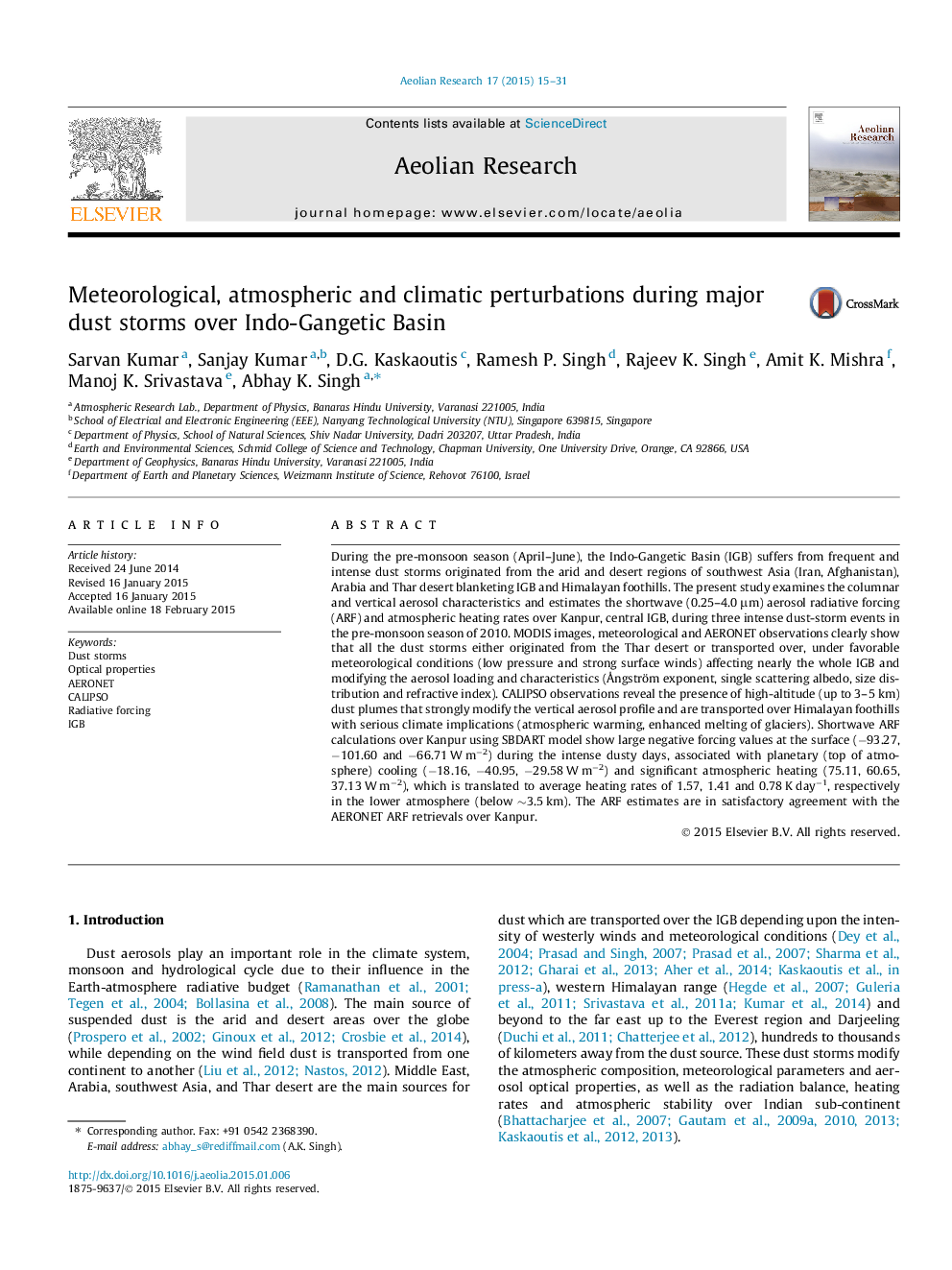| کد مقاله | کد نشریه | سال انتشار | مقاله انگلیسی | نسخه تمام متن |
|---|---|---|---|---|
| 4673757 | 1634110 | 2015 | 17 صفحه PDF | دانلود رایگان |

• Contrast change in atmospheric circulation with dust storms over IG Basin (IGB).
• Pronounced modification in aerosol and meteorological properties during dust storms.
• Vertical distribution of dust observed up to ∼4 km over IGB and Himalayan foothills.
• Contrast change in radiative forcing and atmospheric heating during dust events.
During the pre-monsoon season (April–June), the Indo-Gangetic Basin (IGB) suffers from frequent and intense dust storms originated from the arid and desert regions of southwest Asia (Iran, Afghanistan), Arabia and Thar desert blanketing IGB and Himalayan foothills. The present study examines the columnar and vertical aerosol characteristics and estimates the shortwave (0.25–4.0 μm) aerosol radiative forcing (ARF) and atmospheric heating rates over Kanpur, central IGB, during three intense dust-storm events in the pre-monsoon season of 2010. MODIS images, meteorological and AERONET observations clearly show that all the dust storms either originated from the Thar desert or transported over, under favorable meteorological conditions (low pressure and strong surface winds) affecting nearly the whole IGB and modifying the aerosol loading and characteristics (Ångström exponent, single scattering albedo, size distribution and refractive index). CALIPSO observations reveal the presence of high-altitude (up to 3–5 km) dust plumes that strongly modify the vertical aerosol profile and are transported over Himalayan foothills with serious climate implications (atmospheric warming, enhanced melting of glaciers). Shortwave ARF calculations over Kanpur using SBDART model show large negative forcing values at the surface (−93.27, −101.60 and −66.71 W m−2) during the intense dusty days, associated with planetary (top of atmosphere) cooling (−18.16, −40.95, −29.58 W m−2) and significant atmospheric heating (75.11, 60.65, 37.13 W m−2), which is translated to average heating rates of 1.57, 1.41 and 0.78 K day−1, respectively in the lower atmosphere (below ∼3.5 km). The ARF estimates are in satisfactory agreement with the AERONET ARF retrievals over Kanpur.
Journal: Aeolian Research - Volume 17, June 2015, Pages 15–31